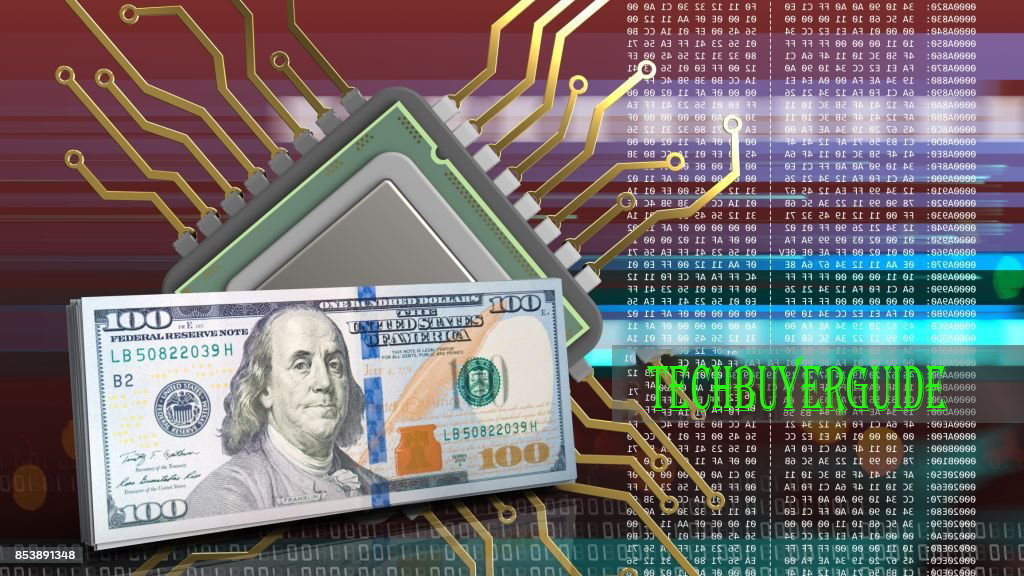
When it comes to building a computer, there are 8 key components to consider, but the most crucial ones are the CPU, GPU, Storage, and Memory. These components play a vital role in ensuring smooth data flow and efficient performance.
1. First and foremost, it’s important to ensure that your CPU is capable of supporting all your GPUs. This will ensure that your system can handle the processing power required for your tasks.
2. Next, the GPU needs to be fast enough and have enough memory to accommodate the model and data batch. This is essential for handling large and complex datasets without sacrificing performance.
3. In terms of memory, it’s important to opt for DDR4 and ensure that it is large enough to handle most datasets uncompressed. This will allow for seamless data processing and manipulation.
4. Last but not least, the storage should be M.2 PCIe and large enough to accommodate all your data storage needs. This type of storage ensures fast data transfer and efficient performance.
5. By prioritizing these key components, you can ensure that your computer build is optimized for high performance and seamless data processing.
Make your computer expandable to 4 GPUs with the right CPU
When it comes to determining the number of GPUs you’ll need for your work, it can be a challenging task. Some models require extensive training time, such as Vision CNNs and Natural Language Processing LSTMs, which can take hours on end. That’s why starting with just 1 or 2 GPUs and adding more as you progress is a smart approach.
Keep in mind that each GPU requires at least 8x PCIe lanes, and you’ll also need lanes for other components such as the M.2 SSD and Gigabit Ethernet. This means that you’ll need a CPU with 40+ PCIe lanes to accommodate all these components. Your choice of CPU will determine the type of motherboard you’ll need, so make sure to select a CPU with 8+ cores and 16+ threads.
Having a CPU with 40+ PCIe lanes allows you to run 4 experiments per GPU (or 16 with 4 GPUs), which is crucial for efficient model training. And don’t forget to ensure that the PCIe lanes are properly routed to the expansion slots. With the right setup, you’ll be able to handle complex models and experiments with ease.
AMD CPUs offer better value than Intel
It’s undeniable that AMD is the superior choice in terms of performance and affordability. Just look at the specs and prices – AMD’s 1920X offers more cores, threads, and PCIe lanes for a fraction of the cost compared to Intel’s 7900X. And let’s not forget about the benchmarks, which clearly demonstrate AMD’s comparable performance. Plus, even AMD’s second generation 2920x is a steal at only $400. It’s a no-brainer that AMD is the top choice for anyone in the market for high-performance processors at an unbeatable value. Disclosure: I’m long AMD stock.
Your GPU needs to have enough memory and be fast enough
When it comes to GPU memory, it’s crucial to understand that it operates differently than computer RAM. If you don’t have enough memory to accommodate your model, you won’t be able to effectively train it. In some cases, models may require 10GB or more to run smoothly, so it’s always better to opt for a GPU with more memory to ensure efficient training.
Nvidia GPUs are well-known for being more user-friendly than other platforms, thanks to the strong community support for tools like TensorFlow and PyTorch. When selecting a GPU, look for cards with ‘blower style’ fans, especially if you plan to use multiple GPUs, as they help vent air outside of the box. Some recommended options include the Titan RTX for top-tier performance, the 2080 Ti, 1080 Ti, or 2080 Super for high-end performance, the 2070 Super for mid-tier performance, and the 2060 Super for low-end best value performance.
Keep in mind that GPU inventory is limited, so you may need to search around for available options. The Titan RTX is a powerhouse card and significantly faster than the 1080 Ti, especially in half precision mode, due to its additional Tensor Cores and extra memory. The 2080 Ti is also a great option, offering substantial performance improvements over the 1080 Ti. Remember that the speed performance is linear to the number of CUDA cores, so choose a GPU that best fits your specific needs and budget.
Storage and Memory need to be as fast as possible
When it comes to moving data quickly and efficiently, you absolutely need the best tools for the job. That’s why using M.2 SSD NVMe and DDR4 memory is absolutely essential for a fast data pipeline. These components plug directly into the motherboard, ensuring lightning-fast and seamless data transfer. Don’t settle for anything less when it comes to speed and performance. Make the smart choice and upgrade to M.2 SSD NVMe and DDR4 memory for the fastest data pipeline possible. Trust me, you won’t regret it.
Important tradeoffs of my build and common pitfalls
Let’s take a look at the updated parts list with pricing and inventory for building your own high-performance computer.
GPU:Starting with the GPU, the 1080 Ti was initially chosen for its significant 40% speed gain over the 1080, making it ideal for reducing train times and working with large models. However, due to availability issues, the 2080 Ti and Titan RTX were added as alternatives, with the 2060 Super being the best value for a starter card in 2020.
CPU:Moving on to the CPU, the AMD 1920X with 12 cores and 38MB cache was selected for its additional performance capabilities and potential for use as a staging server in the future.
Storage: A single 1TB M.2 SSD was chosen to avoid the hassle of managing multiple drives, with the potential addition of a large spinning hard drive for “cold” storage in the future.
Memory:Quad channel memory was selected to maximize the performance of the 1920X, with 4 x 16GB chosen to allow for an easy upgrade path to a maximum supported memory of 128GB.
Power Supply:The 1600W P2 power supply was chosen to comfortably cover the power needs of the system, with enough headroom for overclocking and avoiding the need to max out the power supply.
Case:, the Lian-Li PC-O11AIR case was selected for its 8 expansion slots, making it ideal for fitting 4 double-wide GPUs and offering a sleek and stylish design with dust filters included. This parts list offers a high-performance and future-proofed build for all your computing needs.
Avoid these 7 Common Pitfalls
Hey there! If you’re building your own computer, it’s important to run through this checklist to ensure everything checks out.
GPUs overheat my computer: if GPUs are overheating your computer, make sure you’re using blower-style GPUs like the 2080 Ti Turbo by Asus, as they vent out the back of the case. Blower-style GPUs are essential for preventing overheating. Also, be sure to have a fan that delivers cold air directly onto the GPUs’ intake to keep them running smoothly.
Not enough PCIe lanes: ensure you have enough PCIe lanes for your GPUs. You’ll need at least 8x PCIe lanes per GPU, with 16x being even better. If you’re running multiple GPUs, make sure you have enough PCIe lanes to handle them all.
My model doesn’t fit in my GPU memory: If you’re working with large Convolutional Networks and LSTMs that use a lot of GPU memory, the difference between 8GB and 11GB can be significant.
Motherboard doesn’t fit 4 GPUs:,Make sure your motherboard and case are up to the task. Your motherboard needs to have slots for up to 4 GPUs with space between them, and your case needs to have enough expansion slots to accommodate them all.
Power Supply doesn’t have enough power / is too loud: Make sure it has enough power for your GPUs, CPU, and other components, and consider the noise level as well. No one likes a loud power supply, so look for reviews of quieter options, such as 80+ Platinum rated units.
My CPU cooler blocks the first GPU slot: if you’re using a big air cooler for your CPU, be aware that it may block the first GPU slot. Do your research and find a cooler that won’t cause any conflicts with your GPU setup.
By following these guidelines, you can ensure that your computer build goes off without a hitch!
A budget expandable Deep Learning Computer at $2k
This affordable Deep Learning Computer is a steal at just $2k and can be expanded to accommodate 4 GPUs. It’s the perfect cost-effective and flexible option for anyone looking to explore the world of deep learning. Don’t miss out on this opportunity to dive into the exciting field of deep learning without breaking the bank.
Save a thousand dollars as compared to buying
If you’re in the market for a new system, you should seriously consider the 4×2080 Ti system from Exxact for $7,999. This deal is truly unbeatable. Alternatively, you can go for the 2×2080 Ti system for $5,899. Sure, building your own 4 GPU system may seem like a fun project, but when you factor in the cost, it adds up to $6,600. That’s $1,400 cheaper to just buy it instead of building it yourself. Plus, with a pre-built system, you get the added benefits of a 3-year warranty, support, and pre-installed software. Whether you’re a busy individual or buying for academia or a company, the convenience and peace of mind that come with a pre-built system are definitely worth considering.

Ordering and putting parts together
Putting parts together takes a few hours
Building a computer is easier than you think! Just follow these 4 simple steps: 1) Prepare the case, 2) Prepare the motherboard, 3) Mount the motherboard, and 4) Install the memory, GPU, and wrap up. Trust me, following these steps will make the process smooth and efficient. You’ve got this!
Install software with online scripts and tutorials
You know, when it comes to installing Ubuntu and setting up CUDA/CuDNN/Tensorflow, it can be a bit tricky if you don’t have the right guidance. But if you follow the right tutorials, it’s actually not that hard at all. In fact, there are even prebuilt options for Tensorflow now, so you don’t have to go through the hassle of compiling it from scratch. Trust me, with the right tutorial, you’ll have everything up and running in no time. It’s worth the effort to ensure you have the right resources to guide you through the installation process.
Expanding to more GPUs
If you’re ready to take your gaming and graphics performance to the next level, upgrading your graphics card is the way to go. Adding a Titan RTX, a 2080 Ti, or another 1080 Ti is a simple and easy process that will make a significant difference in your gaming experience. Just be sure to upgrade your Nvidia driver to nvidia-410 in order to properly run the 2080 Ti. Trust me, this upgrade is worth it, so don’t hesitate to make the switch and see the difference for yourself!
Benchmarking your Deep Learning Computer
If you really want to grasp and maximize the potential of deep learning, then having your own personal deep learning computer could be the key to unlocking faster learning capabilities. By understanding what drives deep learning performance and how your computer compares to the cloud, you can take control of your learning and achieve faster results. Don’t underestimate the power of having your own dedicated resources at your fingertips. It could make all the difference in accelerating your deep learning journey.
FAQ
Why is expandability important in a Deep Learning Computer?
If you’re hesitant about how much GPU power you’ll need for your deep learning computer, the most sensible approach is to begin with a system that has 1 GPU and then gradually add more GPUs as you gain experience and figure out your specific requirements. This way, you can fine-tune your system for efficiency and cost-effectiveness while still having the flexibility to expand as needed. It’s a practical and strategic way to construct a deep learning computer.
How can I learn this stuff?
This is an amazing chance to access some of the best computer science curriculum for free, courtesy of Stanford University. You’ll have the opportunity to learn from one of the top universities in the world, as well as explore the latest cutting-edge research in the field. Don’t let this valuable opportunity pass you by – take advantage of it to expand your knowledge and stay up-to-date on the latest advancements in computer science.
What models can I train?
You have the power to train any model as long as you have the right data. Using GPUs can greatly benefit the training of Deep Neural Nets like CNNs, RNNs, LSTMs, and GANs. It’s crucial to have the necessary tools in order to maximize your training potential. So, make sure you have the right tools to achieve the best results.


